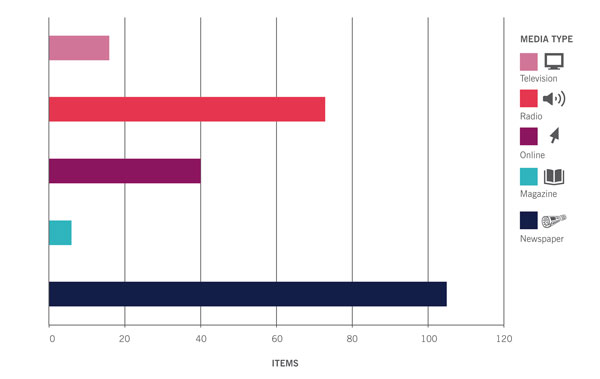Effective media use is the key that unlocks the metaphorical door standing between you and your target market. Whether you are an association advocating on behalf of members or a charity seeking funding, a successful campaign requires a strategic media plan. Here are a few tips to improve your campaign’s media engagement.
1. Set a clear campaign aim
Before approaching the media, it is important to have a clear campaign goal in mind. A campaign promotion should be focused on achieving this goal. For example, the Dietitians Association of Australia’s (DAA) goal for its Australia’s Healthy Weight Week (AHWW) campaign was to motivate young Australian women to kick-start healthy eating habits and all media use was centred on achieving this objective. Media releases included relevant statistics and interesting facts on weight issues in young women.
2. Develop key campaign messages
Having clearly defined campaign messages helps to maintain consistency throughout promotional initiatives. DAA tailored its campaign message to the campaign’s goal and target audience. The messages were also independently reviewed by an Accredited Practising Dietitian (APD) with expertise in communicating on weight management.
One key message DAA developed was a ‘call to action’ message, which encouraged people to solidify their involvement in AHWW by taking a pledge. An example of the way DAA communicated this message is below:
DAA and its APD members encourage you to make 2012 the year to commit to looking and feeling your best! Start by taking part in the AHWW positive pledge campaign. And to get results, see an APD for help on healthy eating. APDs provide science-based food and nutrition advice that is tailored to your needs. Visit www.healthyweightweek.com.au for more information.
3. Save the date
Asking your target market to save the date is a great promotional tool as it creates hype and anticipation. It is important to ensure that save the date announcements are sent to the most appropriate media outlets and to the right contact. This increases the chance of the story getting run at key media outlets, and ensures the campaign details are communicated to the appropriate target audience.
In the lead-up to the AHWW campaign, DAA emailed save the date announcements to their key media outlets outlining the dates and theme for the AHWW campaign. It also provided a contact for journalists requiring further information or wanting to speak with a DAA spokesperson.
4. Be aware of media deadlines
Newspapers, magazines, websites, television and radio require time to approve stories, create and edit, so it’s important to pitch ideas well in advance of the campaign date.
DAA pitched its story idea to long-lead media including Good Health, Prevention, Madison, Woman’s Day and Women’s Health and Fitness magazines approximately four months prior to the campaign start date.
5. Nominate a spokesperson
Consistency is essential to a successful campaign and can be achieved via an official media spokesperson. The spokesperson must be relevant to the campaign agenda, briefed on the campaign’s key messages, well-spoken, enthusiastic and charismatic.
DAA had the University of Newcastle Professor in Nutrition and Dietetics Clare Collins as their official AHWW media spokesperson. Collins is a highly respected nutrition researcher and educator, Fellow of DAA and the Vice-President of the Australia and New Zealand Obesity Society.
6. Prepare responses
There is such thing as bad press for campaigns, which is why it is important to anticipate negative commentary relating to your campaign and prepare considered responses in advance.
The DAA developed an internal document with responses to potential issues relating to AHWW. This allowed arguments to be consistent and stronger than on-the-spot answers that otherwise would have resulted.
7. Distribute media releases
Media releases covering findings or announcements relevant to the campaign are a great way to generate social commentary and awareness of your campaign. In the lead-up to AHWW, the DAA developed and distributed eight media releases. In one release, the association presented the results of a survey it conducted among the campaign’s target audience titled The Young Women’s Nutrition Survey. The survey provided information and statistics on eating habits and weight issues in this demographic. In another media release, DAA drew on new research from The University of Sydney relating to the benefits of higher protein diets and regular dietitian sessions in helping young women manage their weight.
Below is a summary of the amount of media that promoted AHWW. Of the 240 items, three quarters were a direct result of DAA media releases and other proactive communications.
8. Prepare audio media releases
Audio media releases are pre-packaged, broadcast-ready messages that can be sent directly to radio and television outlets. Similar to press releases, they encourage dialogue on the issue at hand and are a cost-efficient tool to promote your campaign.
DAA’s media spokespeople recorded audio media releases prior to AHWW, which were then distributed to a wide range of major metropolitan and regional radio stations.
9. Develop an online presence
Create a website, Facebook page and Twitter account dedicated to round-the-clock campaign promotion. However, be sure that the online mediums are used by your target market, otherwise your time spent updating and maintaining them will be ill invested.
DAA set up a dedicated AHWW website with health facts and tips, fact sheets, and a seven-day meal plan and recipes relevant to young women. In addition, the ‘My positive pledge for AHWW’ Facebook campaign encouraged people to post a health pledge for the chance to win a complimentary appointment with an APD.
10. Monitor media
Media monitoring services enable you to track how successful different media outlets have been throughout your campaign in order to determine where efforts should be focused during future campaigns.
DAA used a media monitoring service to analyse which media covered AHWW. They also used the free Google Reader tool to monitor online mentions of the campaign’s key words such as ‘Dietitians Association of Australia’ and ‘Accredited Practising Dietitian’. Google Reader accounts can be easily set up using a Gmail account.
Menchie Khairuddin is a writer Deputy Content Manager at Akolade and content producer for Third Sector News. She is passionate about social affairs specifically in mixed, multicultural heritage and not-for-profit organisations.
































































































































































































































































